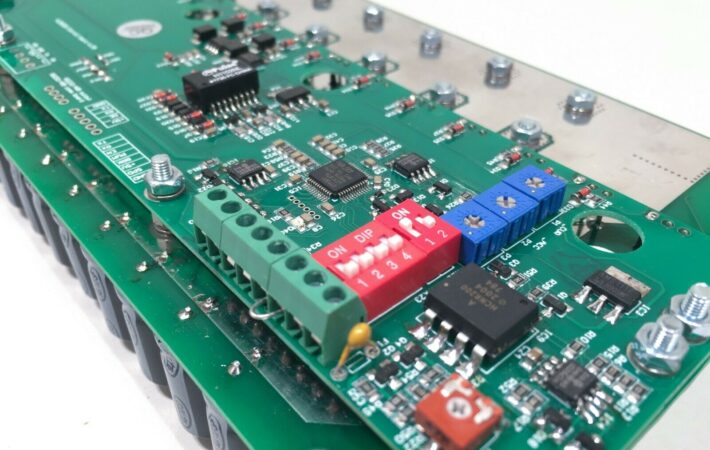A motor controller is a device that helps regulate the speed, direction, and performance of motors. Whether in electric vehicles, industrial automation, or DIY robotics projects, motor controllers play a crucial role in ensuring optimal operation.
How Does a Motor Controller Work?
The primary function of a motor controller is to interpret incoming control signals and transmit the appropriate power to the motor. This can be achieved through various methods:
- Voltage Regulation: Adjusts motor performance by modifying voltage levels.
- PWM (Pulse Width Modulation) Control: Uses pulses to regulate power delivery efficiently.
- H-Bridge Circuitry: Allows for motor direction changes based on control signals.
Why Do You Need a Motor Controller?
1. Precise Control
Without a motor controller, electric motors can only be turned on or off. A controller enables accurate speed adjustments, essential for automation and robotics applications.
2. Energy Efficiency
PWM control minimizes energy loss, which is particularly important for battery-powered devices like electric vehicles.
3. Protection for the Motor and Electrical System
Motor controllers incorporate multiple safety features, such as:
- Overload Protection: Prevents excessive current draw.
- Temperature Regulation: Prevents overheating with sensors and automatic shutdown mechanisms.
- Regenerative Braking: Recharges the battery when the motor slows down.
4. Versatile Applications
Motor controllers are widely used in various industries, including:
- Electric vehicles (e-bikes, e-scooters, go-karts)
- Robotics and automation
- Conveyor belts and industrial machinery
- Model cars and drones
- Renewable energy systems
How to Choose the Right Motor Controller?
When selecting a motor controller, consider the following factors:
- Operating Voltage (e.g., 12V, 24V, 48V, etc.)
- Maximum Current Rating (e.g., 10A, 30A, 50A)
- Communication Interface (e.g., analog input, serial communication)
- Speed Control Options (e.g., potentiometer or joystick control)
- Regenerative Braking and Additional Features
Conclusion
A motor controller is a vital component that enables precise motor control, energy efficiency, and system protection. Whether you’re working on a small robotics project or an industrial drive system, selecting the right motor controller is crucial for success.
If you’re looking for a high-quality motor controller, check out our online store, where we offer a wide range of solutions tailored to your needs.


Leave a comment
Your email address will not be published. Required fields are marked *